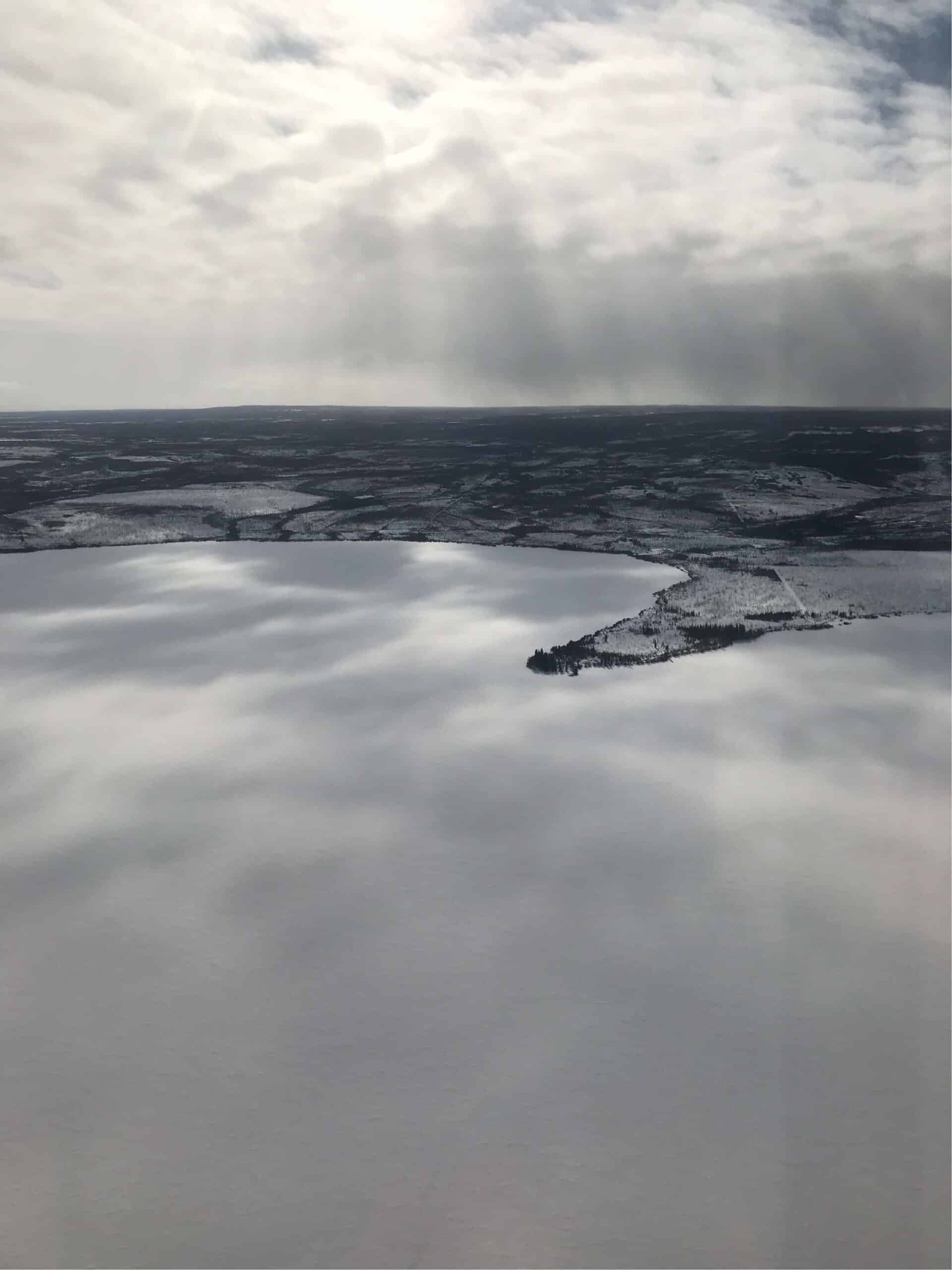Community-led caribou monitoring: taking the first steps in a unique northern study
Recently (but not too recently – this is pre-COVID!) members of our team at CPAWS Northern Alberta had the unique opportunity to travel north to Bistcho Lake: the third-largest lake in Alberta, located only a few kilometres from the Northwest Territories border.
The purpose of this trip? To begin the fieldwork for a collaborative caribou monitoring project led by the Dene Tha’ First Nation, which is the first of its kind occurring this far northwest in the province.

More than a monitoring project
This initiative is a community-led project, steered by the Dene Tha’ First Nation, with the goals and project design guided by members of the First Nation. The work is made possible through a Community-Nominated Priority Places Grant, which is a part of the federal government’s Nature Fund. CPAWS NAB is excited to collaborate on the project to learn more about the woodland caribou in the northwest and help recover their declining numbers.
“A community-based monitoring program for the Bistcho caribou herd means the project design, how it’s carried out, and the questions it asks come from the community,” said Gillian Chow-Fraser, lead of the CPAWS NAB Boreal Program. “It would be something developed by the community for the community.”
The caribou monitoring project will help the project team understand how areas around Bistcho Lake are used by caribou. This information can help guide management plans to recover the Bistcho caribou herd – plans that are being developed right now by the province. The Lake is known to be extremely important habitat, so being able to protect certain areas or features around it could be of key importance to conserving the Bistcho herd.

Caribou declines significantly impact Indigenous communities. Many communities have strong cultural connections to caribou and may have even depended on sustainable harvests of the herds. For decades now, caribou numbers have sadly fallen dramatically and immediate action for their recovery is necessary.
Caribou recovery plans are strengthened by collaboration and partnership with Indigenous communities—from developing management intentions, to collecting monitoring data, to implementing actions. This project emphasizes that Indigenous peoples are leaders in conservation and are well-positioned to guide recovery actions. Our team members are working together to co-develop a strategy for saving caribou by integrating Traditional Knowledge and Western science.
A birds-eye view on caribou
So, what does this all have to do with jumping in a helicopter? The goal of this trip was to set up an array of wildlife cameras to begin collecting data on caribou habitat use. In an area as vast and remote as Bistcho Lake, a helicopter is the most practical way to get around – with the added benefit of providing an aerial view of caribou habitat!
And, in a special moment, our field team even saw some of the Bistcho caribou herd themselves!

For the project team, it was an extremely exciting experience to see caribou out in the field. Caribou are elusive animals and almost every herd in Alberta is in decline, so the chances of seeing one (even if you are a caribou expert) are pretty slim.
“The helicopter pilot said I screamed so loud that it blew out his ears when I saw them,” said Gillian, reflecting on this exciting moment. “I’ve worked on caribou for so long in Alberta, and I’ve done so many seasons of fieldwork in caribou habitat, but I had only ever seen one caribou before!”
Roughly 30 cameras were placed all around the lake in a variety of habitat types, focused on features identified by Dene Tha’ Elders as very important to caribou.
The monitoring data will help to assess how and when caribou use the Lake, especially considering how dramatically the landscape has changed since European settlement. Seismic lines and roads have been cut across the forest for oil and gas exploration and transport, creating a very different type of forest for caribou to navigate.


Next steps
Depending on COVID travel restrictions, the field team plans to come back together in the fall of 2020 to collect memory cards from the wildlife cameras and see what areas and habitat features caribou have been using.
“To know that those cameras are out there, ticking, and collecting information on caribou that can help us save them, is really exciting,” said Gillian.
While caribou habitat use has been well studied in other parts of Alberta, robust data in remote areas in the northern part of the province can be difficult to collect. This project will provide a unique dataset, and hopefully help to piece together the lost knowledge of the past.
We look forward to providing you with an update when we get down to looking through our wildlife camera photos. For now, enjoy this beautiful view of Bistcho Lake – one of the most wonderful places the CPAWS NAB staff have ever had the luck to visit!

Take Action
Share your support for National Urban Parks
Email your MLA to let them know you support National Urban Parks and would like to see Alberta be a part of a national network of urban parks.
STAY INFORMED
Protect the Wilderness
To receive news and updates from CPAWS Northern Alberta, including opportunities to get involved, join our mailing list below.
